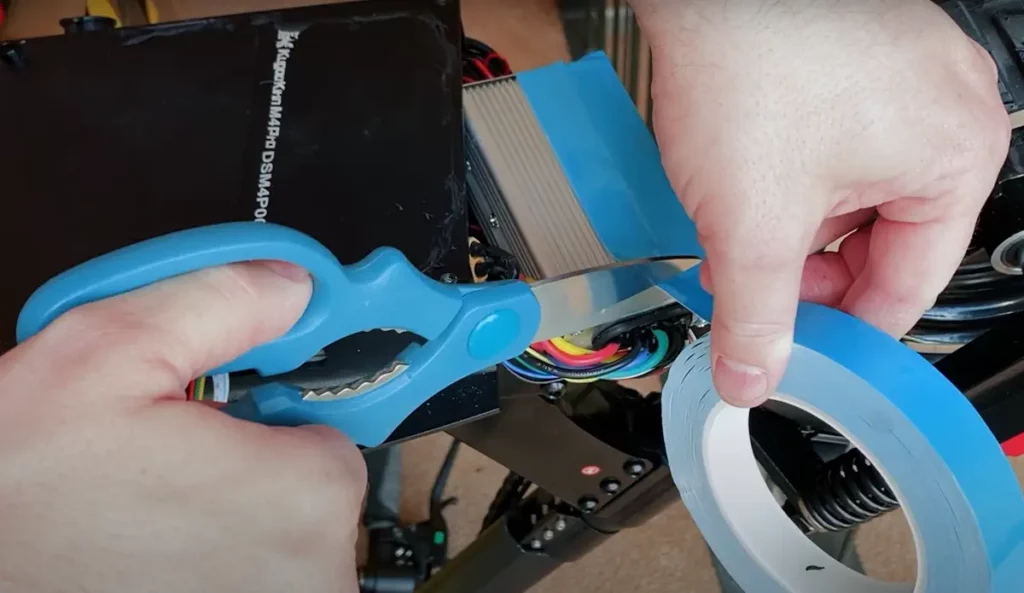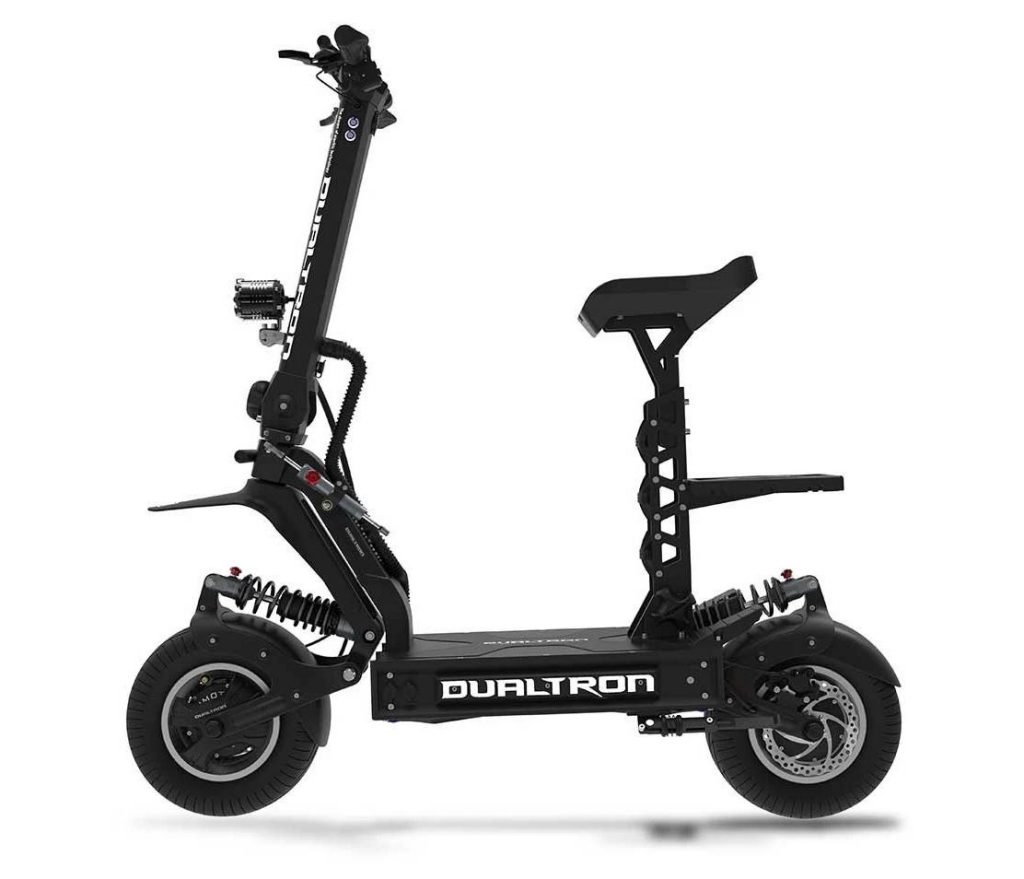As cities grow, traffic jams worsen, causing productivity loss for daily commuters.
Public transport aims to alleviate this, but what if access is too distant or the system is unreliable?
If you’ve heard the term “last-mile transportation”, it describes exactly that problem. In this guide, we will see how electric scooters are related to last-mile transportation

Last Mile Transportation With Electric Scooters
Electric scooters are the perfect solution for the last mile transport problem. They are easy to carry in and around public transport, and ideal for last mile transportation.

What is the last-mile transportation problem?
According to Wikipedia:
Last-mile is a term used to describe the movement of people and goods from a transportation hub to a final destination.
Wikipedia on Last mile transportation
Cities strive for efficient public transport, but passengers often face a gap in reaching their final destination. Taxis and ride-sharing are costly, and car ownership is impractical, especially in large cities.
High parking costs in city centers affect even car owners. You can see how much you will save on car expenses with this car commute cost calculator.
Public transport often falls short, plagued by delays, cancellations, overcrowding, and safety concerns. The last-mile commute challenge persists, forcing many to seek alternatives to long walks. In pedestrian-unfriendly cities, time becomes a luxury.

Fear not. Luckily, the right solutions exist.
Rideables as the best last-mile solution
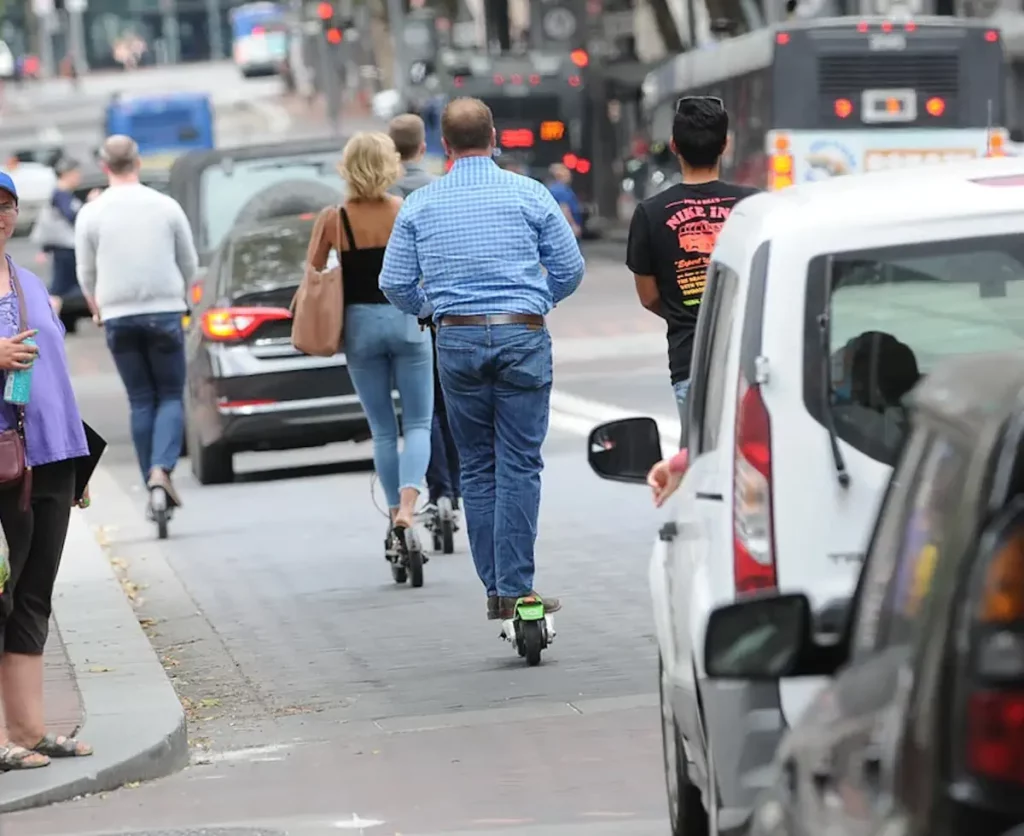
The last-mile problem will be solved by any transportation vehicle that fits the following criteria:
- can be carried by one person
- fits easily in public transport
- if not owned, it can easily be rented through a sharing app
- is sufficiently fast
- doesn’t get stuck in traffic
As you are already guessing, we are talking about rideables.
We can divide them into two basic categories: motor-powered (usually electric), and human-powered.
The traditional vehicles here include bicycles, scooters, and skateboards. All of them can be either electric or human-powered.
There are also a few other electric ones that don’t have a human-powered equivalent. Examples are self-balancing monowheels, unicycles, or hoverboards.
Big cities are coming to the realization that investing in infrastructure that caters to clean and efficient means of transport is paying off.
All around the world, modern cities offer more and more bicycle lanes, which are used by all rideables.
Some even have special lanes for vehicles that are faster than human-powered rideables but slower than cars.
All rideables are pretty good solutions to the last-mile problem. Naturally, some are better than others.
Battery-powered vs human-powered rideables for last-mile transport
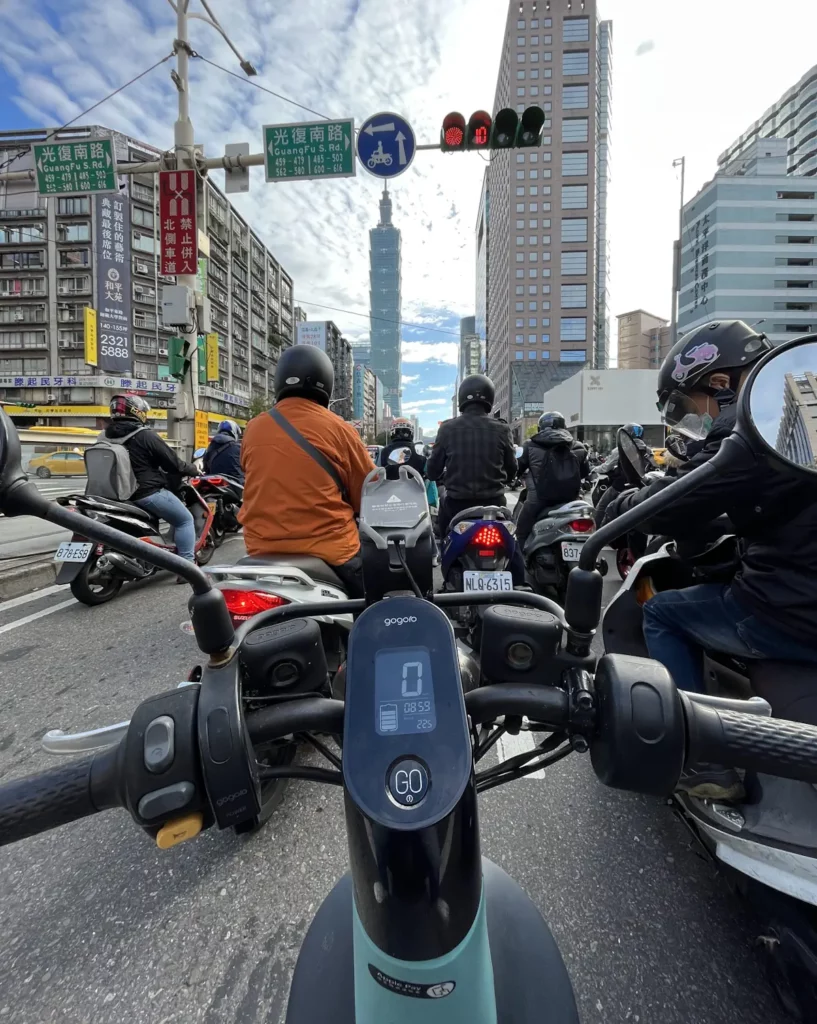
Battery-powered or electric rideables are clearly superior to human-powered ones.
They tend to weigh a few kilograms more because of the battery. But what you get in return is you arrive at your destination not feeling tired, sweaty, or dirty.
Charging an electric rideable costs almost nothing. The ride itself is basically free, the same as with their human-powered ancestors.
Plus, you can ride many of the electric rideables like regular ones (although you will rarely have to). Unless you really need that very little extra exercise from riding a few kilometers yourself, always go for the electric counterpart.
Throughout the history of electric scooters, ride-sharing apps like Bird and Lime have proven to be a solid solution to the last-mile problem. Still, last-mile scooters are nowhere near as efficient as owning the vehicle yourself.
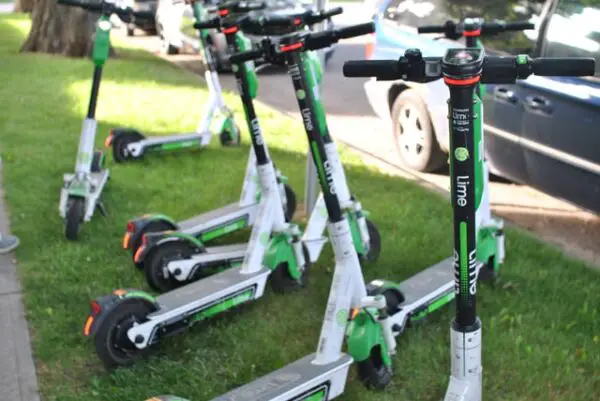
Electric rideables are so cost-efficient, that you will pay off the vehicle in the first year or two. Ride-sharing bikes and scooters are affordable, but over time the bills accrue.
In fact, renting a scooter for one year will cost the same as buying one.
Also, shared scooters have a lot of downsides that an owned scooter doesn’t. When renting a scooter, it will tend to be:
- heavily used, abused, and possibly even broken
- not fully charged
- not as clean and safe
Ride-sharing scooters and bikes have their uses and scenarios where they shine the most. They are perfect for trying out a scooter before deciding to buy it, for a rare need, or when traveling to a different city for a shorter period of time. And, while not as cost-efficient as owning a scooter, many people use ride-sharing scooters for last-mile transport.
But for reliably traveling to and from work, or any other type of commute, nothing beats a personally owned electric scooter or bike.
Different electric rideable for last-mile transportation
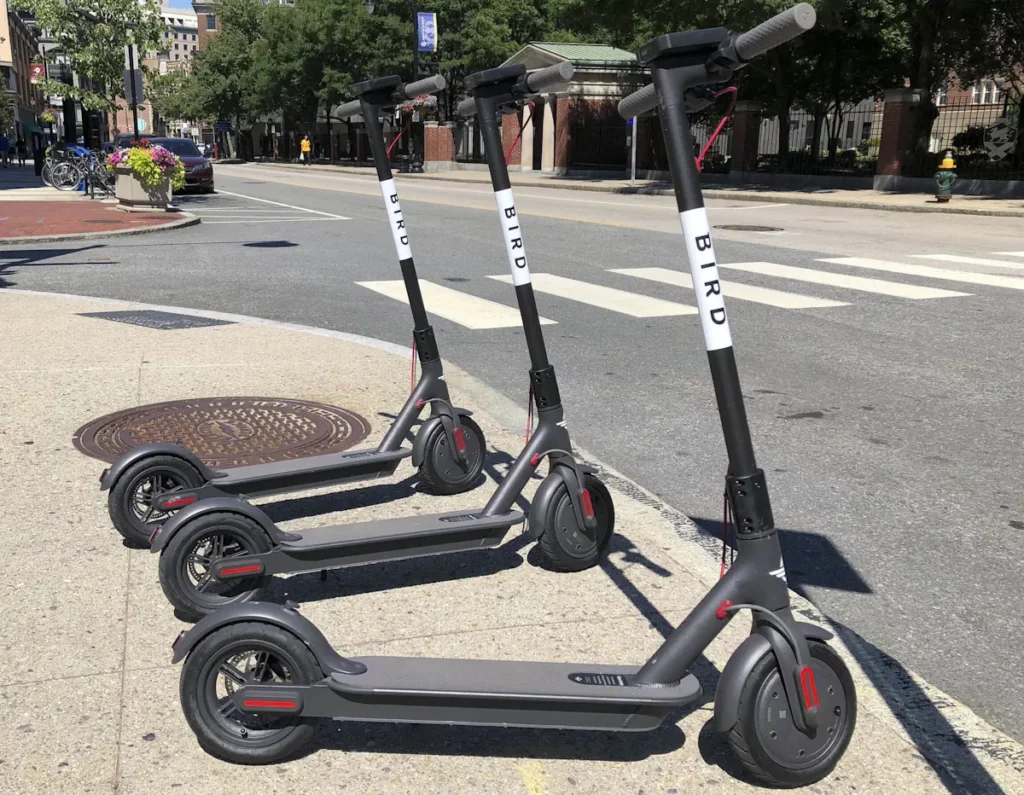
Even among the battery-powered rideables, there is a difference in how good they are for last-mile transport.
Electric bike for last-mile transportation
Electric bikes are a very popular and viable solution.

They offer several advantages.
Electric bikes have a great range, and they can easily be ridden as regular bikes. Having the option to switch between riding modes is good, especially if you wish to get a little bit more exercise or save some battery.
But they have a few disadvantages, some of which can be a real dealbreaker, chief among them being their bad portability, their bigger weight, and their cost.
They have a harder time fitting into public transport than all the other rideables. Most models don’t even fold at all, which makes taking them on the metro or on the bus a mini nightmare, not to mention going through the steel bars that some metro stations have.
Maybe most important of all, they are the most expensive out of all the rideables. Their average price is several hundred dollars more than the price of an average electric scooter.
While a good solution, electric bikes are not the best we can do.
Electric skateboards and unicycles for last-mile transportation
As the kick-powered skateboard, the skateboard is very light and portable.

The range of electric skateboards is usually decent, good enough to get the job of last-mile transport done.
Also, electric skateboards are usually cheaper than many rideables.
They seem to offer a great balance… but only if you have balance!
The biggest problem with skateboards, regular or electric, is that they are simply difficult to ride for many people.
A person that has been riding a skateboard can easily transition to an electric one.
And there’s also the issue of self-image.
Many people simply don’t see themselves as riding a skateboard. It’s hard to picture a middle-aged professional riding a skateboard on their way to work. Not saying that it doesn’t happen (and those people are the coolest!), but for many people, it’s simply not in their lifestyle.
Almost the same applies to electric monowheels, hoverboards, unicycles, and anything in between.
They are very light and portable, and some of them even have a half-decent range. Of course, because of their smaller size, they can’t pack big batteries, so their range will always be inferior to bikes or scooters.
There will likely be times when you fall off of one of those. Honestly, not very appealing for a young professional or an adult just trying to get to work.
Finally, the smaller rideables will not have great top speeds. But anyway, while in the city, you will be limited to the speeds you can develop by law. Which makes this less important.
Electric scooters for last-mile transportation
Let’s see then, what has all the advantages of a battery-powered rideable, but none or very few of their disadvantages?
Naturally, we are talking about the electric scooter as the best electric transportation.
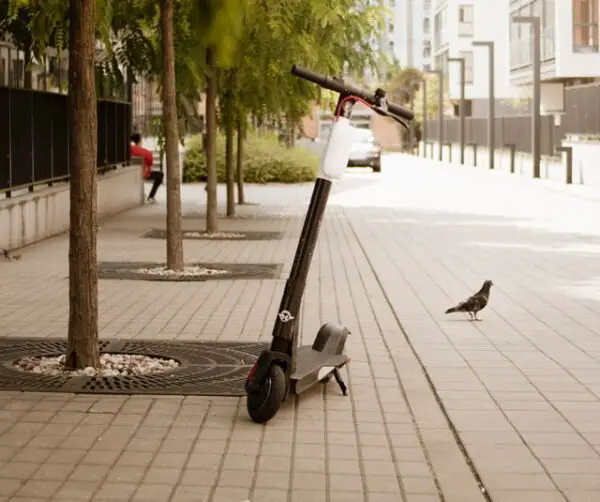
Electric scooter transportation is a perfect way to navigate the traffic jam. E-scooters are cheaper and more portable than electric bikes while having very similar ranges and speeds.
Taking a scooter on the bus or train is a lot simpler than taking a bike.
Even though some electric bikes are also foldable, they are still bulky and have parts sticking out.
The scooter, on the other hand, can fold into a nice, compact, small rectangle. If the handlebars are also foldable, it has nothing sticking out and doesn’t get caught in things.
Another advantage of the electric scooter is that it is far easier to ride than any of the rideables that require some skill to operate. Electric scooters are probably the easiest to ride out of all the rideables. All the monowheels unicycles and skateboards are truly amazing, but they will take more time to master than a scooter. Everyone I know has learned how to ride an electric scooter within one minute.
Finally, and probably most importantly, people prefer using electric scooters to most other last-mile solutions. This means the concept may already be proven.
Take a look at Tim’s video on how he used a car and electric scooter to arrive on time while saving a few bucks.
Conclusion
There are some very good options to solve the problem of last-mile transportation.
Any personal vehicle that you can carry on a public transport ride is a good choice. The lighter – the better.
Electric rides are far more efficient and user-friendly than human-powered ones. Most people with a last-mile problem are people with everyday jobs that need to get somewhere, and efficiency is priority number one.
Also, owning a rideable is much more cost-efficient and reliable than using one through some ride-sharing app. The vehicle will pay itself off very fast, and by taking better care of it, it will be safer and perform better over time.
Out of all the electric rideables, the electric scooter beats all the others.
The public has spoken, and it has crowned the electric scooter for transportation as the best solution to the last-mile transportation problem.
If you need a solid, reliable, simple, and fun way to go that last mile, get yourself a great electric scooter.




